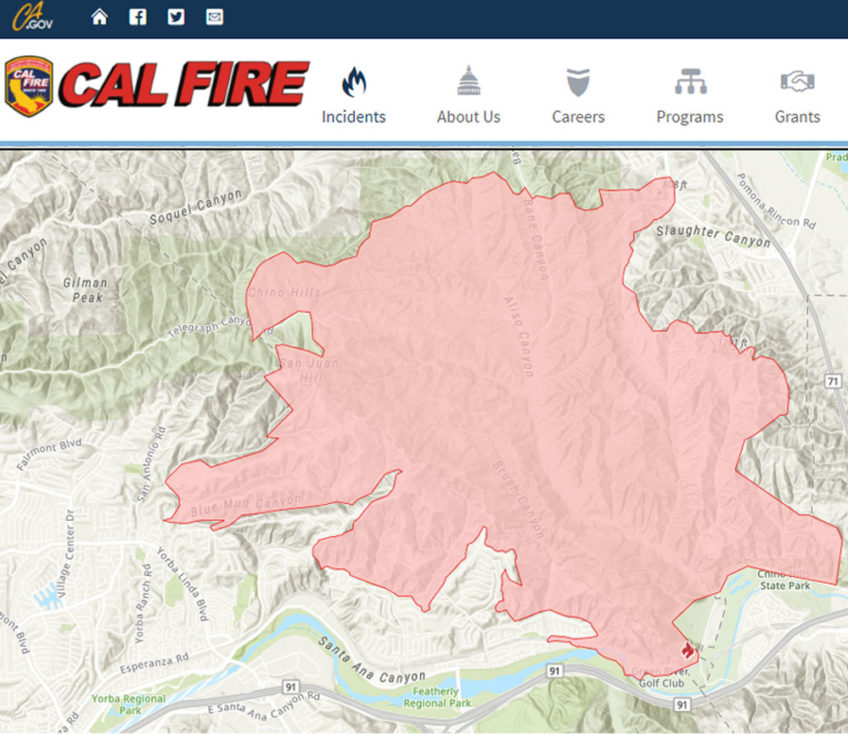It is our understanding that the Blue Ridge Fire has 16% containment and has burned 14,334 acres as of the briefing this morning. These numbers have been adjusted from the 15,200 acre estimate yesterday now that revised mapping has been completed. From our sources (fire agencies, state park staff, and eye witness accounts), here is what we know today:
1. Most of this acreage burned appears to be in the San Bernardino County portion of the Chino Hills State Park. The wooden bridges were lost in Lower Aliso Canyon. The highly sensitive habitat of the Water Canyon Natural Preserve has been consumed. The barn, ranger house, and campground appear to be fine. On the Orange County side key locations burned include Brush, Blue Mud, and Lost Trough Canyons.
2. The 320 acre acquisition from July burned almost entirely. The two acquisitions we are currently working on did burn in their entirety. Though this should not impact the conservation transactions.
3. The fire has burned all the way to the Chino Hills entrance at Bane Canyon entrance road at Elinvar and Sapphire (see photo below). And, due to hazardous conditions the Park will remain closed until further notice while staff evaluates the impacts.
4. Based on notifications from area cities, it is likely the evacuation orders will be lifted this morning and improved access to the impacted communities will be available. Please watch for hotspots and alert fire agencies should they become active fire locations again. Mop up can take a long time.
Hills For Everyone will work closely with State Parks, the Carbon Canyon Fire Safe Council, and others to determine appropriate next steps to help restore this now charred landscape. This fire’s footprint very closely overlaps with the 2008 Freeway Complex Fire, so many of these plants have burned recently and could very well struggle in their recovery. Our habitats should only burn every 30-150 years and human influences have significantly modified the fire frequency to an unnatural level (more than one fire a year).
This causes the plants type convert from coastal sage scrub and chaparral to non-native grasslands because their energy stores to recover are so severely depleted after repeated burns. This type conversion then perpetuates the cycle of burning–since grasslands dry out earlier in the season, ignite easier, and spread fire faster. We appreciate the fire fighters and their diligent work in very difficult conditions to reduce the spread of this fire and save homes at the wildland-urban interface. Let’s hope the cause is determined so we can prevent these fires from occurring in the first place.
